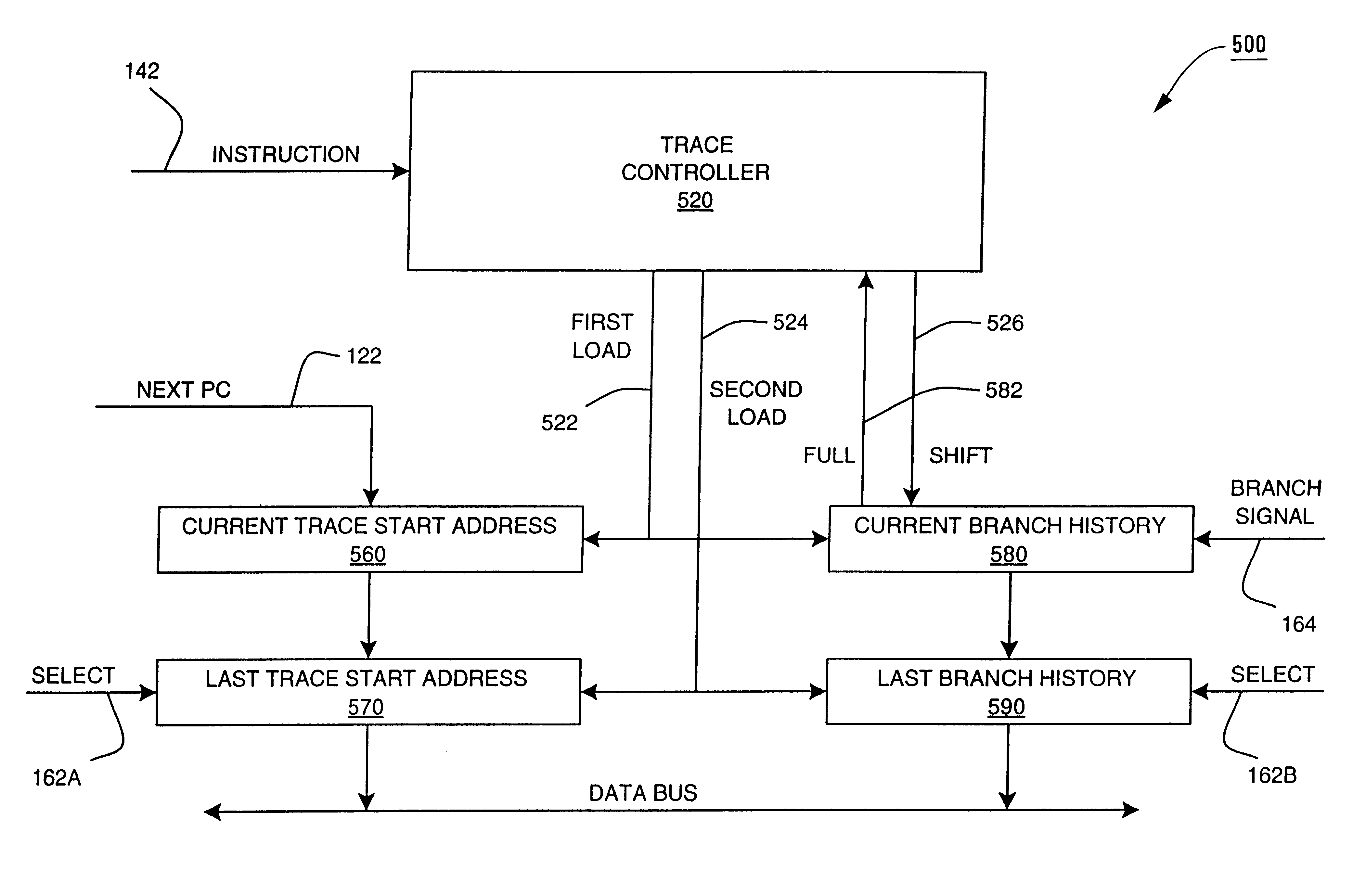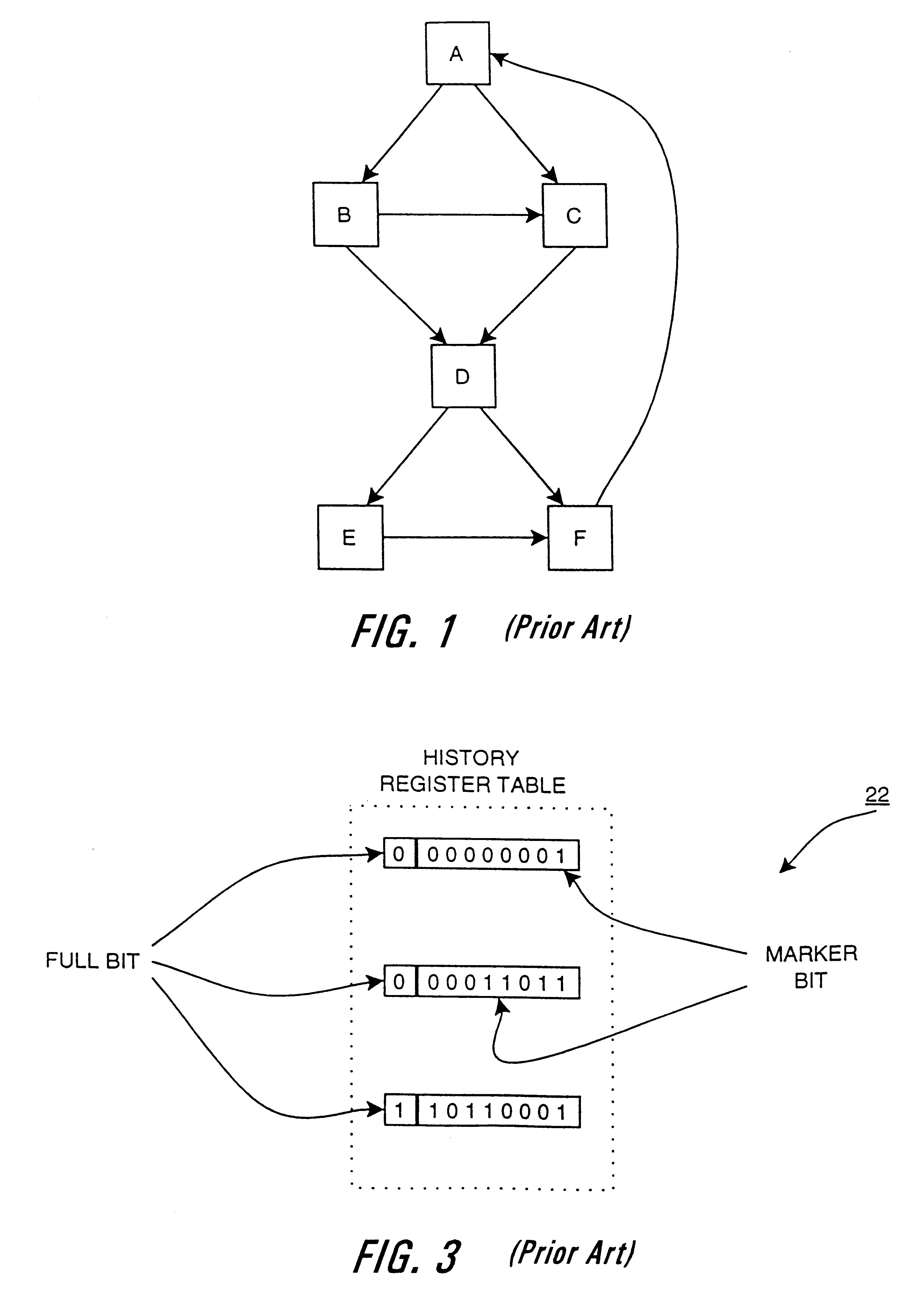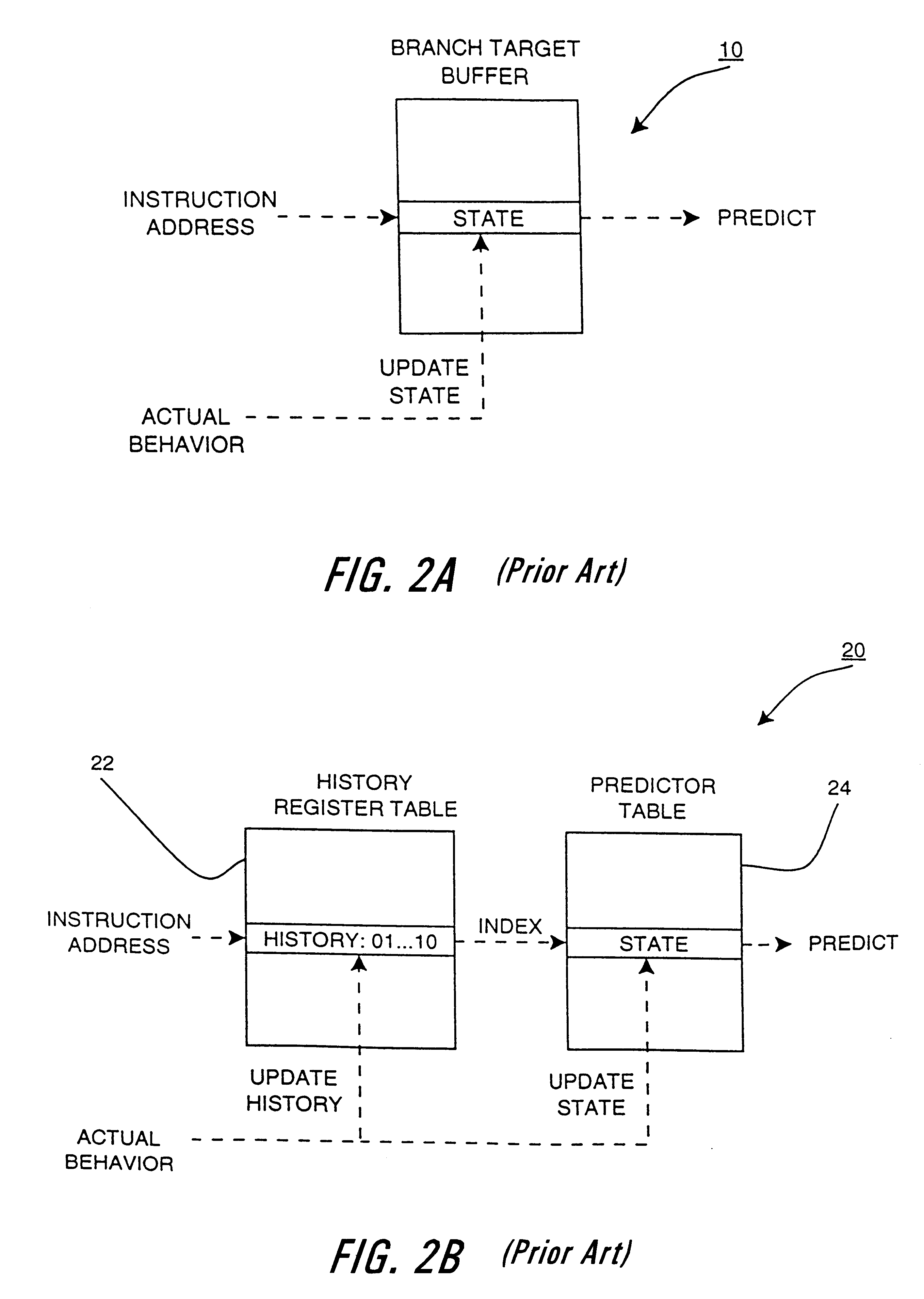Method and apparatus for profiling of non-instrumented programs and dynamic processing of profile data
a non-instrumental program and profile data technology, applied in the field of runtime profiles, can solve the problems of code size explosion, slow execution of code, complex and time-consuming instrumentation-based methods for gathering profile data,
- Summary
- Abstract
- Description
- Claims
- Application Information
AI Technical Summary
Problems solved by technology
Method used
Image
Examples
Embodiment Construction
The present invention is directed towards statistical trace sampling of a program's control flow behavior as it executes on a processor, such as the processor of FIG. 4. A trace is a dynamic sequence of branches that ends when a "trace termination condition" is true. Examples of trace termination conditions are a backward taken branch, where the branch target address is a lower program count than the program count of the branch instruction, or an indirect branch, where the branch target can only be determined by executing that instance of the branch (i.e., the target cannot be determined by decoding the branch instruction itself.
It is also advantageous to limit the overhead involved with trace sampling by placing a limit on the branch history size for a trace and generating a trace termination condition when the limit is reached. The branch history limit is the maximum number of conditional direct branches allowed in a trace. The branch history limit serves to bound the size of the ...
PUM
 Login to View More
Login to View More Abstract
Description
Claims
Application Information
 Login to View More
Login to View More - R&D
- Intellectual Property
- Life Sciences
- Materials
- Tech Scout
- Unparalleled Data Quality
- Higher Quality Content
- 60% Fewer Hallucinations
Browse by: Latest US Patents, China's latest patents, Technical Efficacy Thesaurus, Application Domain, Technology Topic, Popular Technical Reports.
© 2025 PatSnap. All rights reserved.Legal|Privacy policy|Modern Slavery Act Transparency Statement|Sitemap|About US| Contact US: help@patsnap.com



